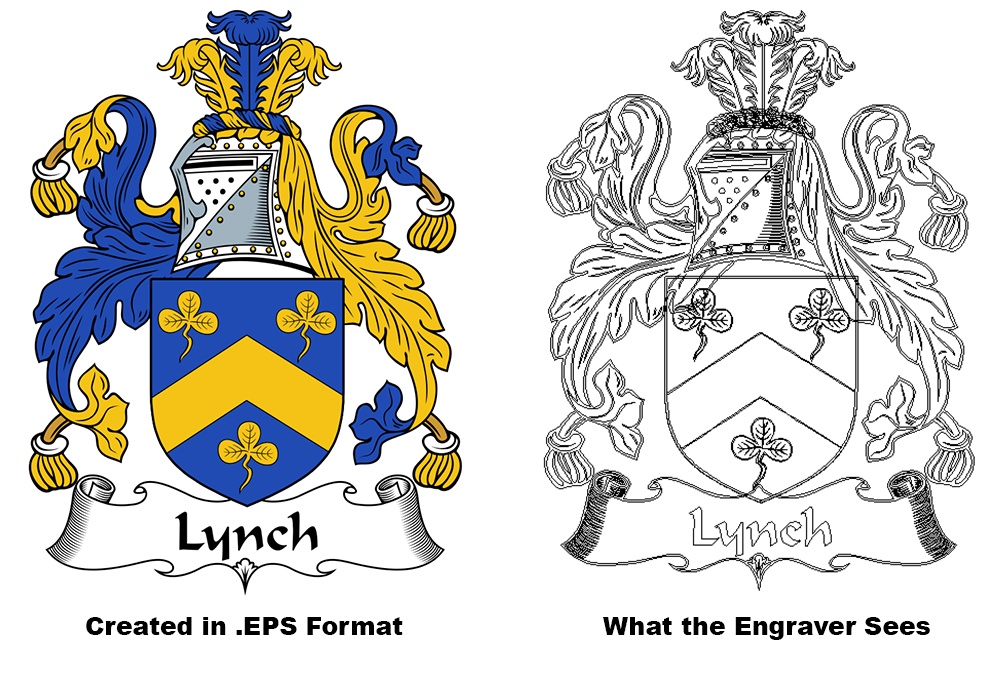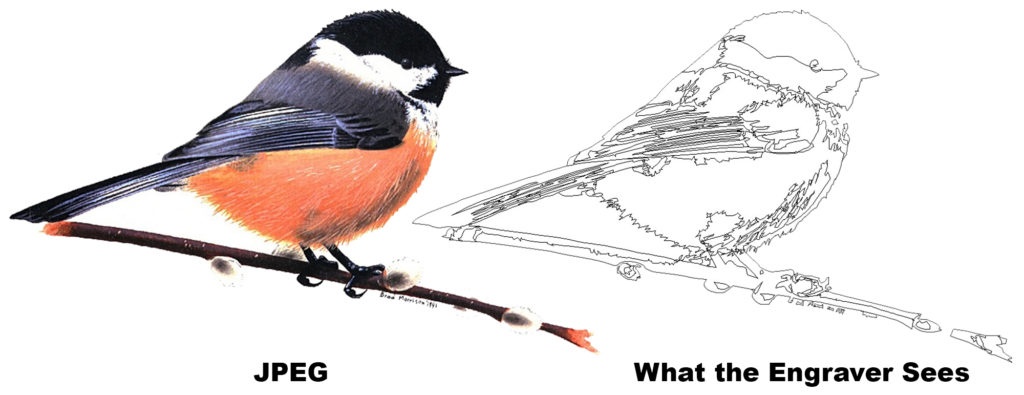Why Vector?
Engraving requires expertise and experience in multiple facets of design and technology. If you think of engraving in terms of school, it’s all about Art and Science! Consider the variety of curriculum for the two and try to marry them together – they couldn’t be more different! That is why it can be difficult to understand how information and images need to come to us for engraving.
To differentiate, let’s say art is like painting or color printing. Designs are created with lines, colors and layers to result in a unique palate that the eye reads as an homogenous, pleasing production. On the other hand, science is more like engraving. There are specific formulas that must be adhered to in order to produce the desired outcome.
 So, when we are asked the question “why vector?” when we request that format for an image, we always explain that it is the language spoken by the engraving equipment. An image in vector, or line format, is actually a mathematical equation for the engraved image (the science). That mathematical equation also allows the image to be sized time and again without losing its integrity and perspective. It can be used for a tiny locket or a giant door, allowing for extreme flexibility. That is the beauty of vectored images.
So, when we are asked the question “why vector?” when we request that format for an image, we always explain that it is the language spoken by the engraving equipment. An image in vector, or line format, is actually a mathematical equation for the engraved image (the science). That mathematical equation also allows the image to be sized time and again without losing its integrity and perspective. It can be used for a tiny locket or a giant door, allowing for extreme flexibility. That is the beauty of vectored images.
The next question is always if other types of images can be used. They can be used as a starting point, but usually require significant design time to clean up and remove layers to use for engraving. Design work can add cost to the project, which is never ideal for the customer.

